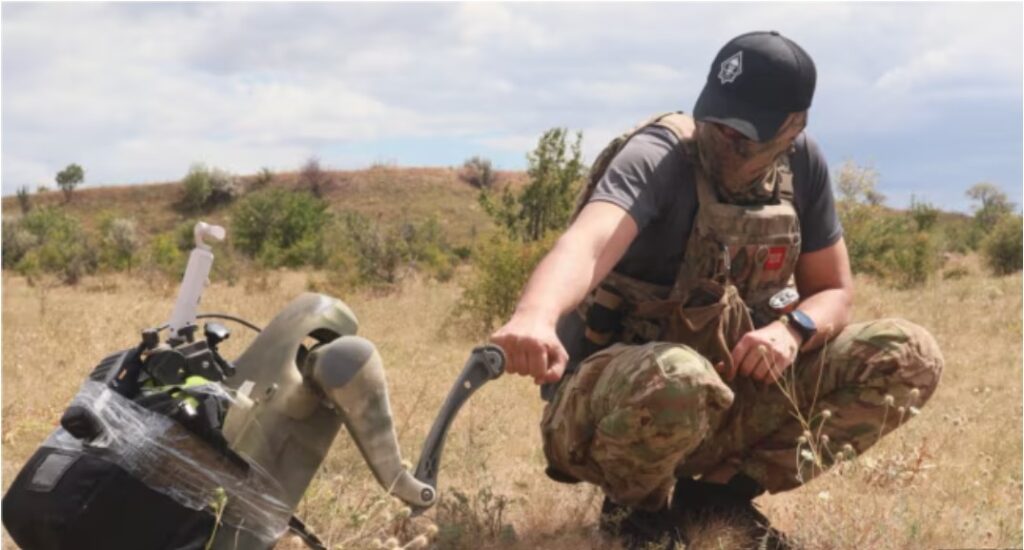Forbes: Ukraine’s robot dogs failed the war test – they couldn’t hide from Russians. Humanoid robots are up next


Ukraine is making a major strategic shift toward robotic warfare, with plans to field 15,000 Uncrewed Ground Vehicles (UGVs) in 2025, Forbes reports.
“Ukraine has scaled up drone production at pace, going from a few thousand in 2022 to 200,000 in 2023 and 2 million in 2024,” notes Forbes technology correspondent David Hambling. “But putting thousands of metal boots on the ground to replace humans is a far more challenging prospect.”
Ukraine’s Ministry of Defense has dramatically ramped up investment to meet this challenge. Defense chief Hlib Kanevskyi told Economichna Pravda that contracts worth $2.5 million were signed in the second half of 2024, followed by a surge to $150 million in Q1 2025. That’s a hundred-fold increase, signaling how seriously Ukraine is taking its robotic future.
UGVs take the risk so soldiers don’t have to
While drones have proven invaluable for reconnaissance and strikes, UGVs face steeper hurdles. They’re costlier—starting around $2,000–$3,000 for basic models and $10,000+ for advanced units—and are best suited for tasks aerial drones can’t perform.
“UGVs are only worthwhile if they do things drones cannot,” writes Hambling. Given their limitations, ground robots have largely taken on niche roles like logistics and casualty evacuation.
Out of 50 approved UGV models, only 10–15 are in regular front-line use. Many are deployed to resupply troops in high-risk zones—a 60-kilogram payload can keep a position stocked for several days. “That’s very efficient,” says Kateryna Bondar, a fellow at the Wadhwani AI Center at CSIS.
Medical evacuation is another use case, but the human support required can be extensive. One mission reportedly involved over 50 personnel to evacuate three wounded soldiers. In many cases, running a single UGV takes a full crew: a driver, a weapon operator, and an aerial drone team for overwatch.
“That’s four people plus a load of hardware to replace one soldier,” Hambling notes.
Robots lead, humans secure
Despite the obstacles, Ukraine is already experimenting with next-gen tactics. In late 2024, the 13th National Guard Brigade launched the country’s first “robot-only assault,” using scout drones, FPVs, bombers, and dozens of UGVs. Ukrainian forces call this “assault without assault”—human troops enter only after machines have secured the position.
Defense is proving more practical than offense for robotic systems. Automated turrets and robotic weapons are already in place and performing well. “At this point, I think they could hold a defensive position fairly well,” Bondar says.
Looking further ahead, Ukraine envisions a battlefield where one human commands multiple UGVs, but Bondar warns this is still years away, even in a high-urgency environment like Ukraine.
Robot dogs disappoint, humanoids still just hype
Meanwhile, quadruped robots—so-called “robot dogs”—have underperformed.
“Operators complained that ploughed fields are a problem for quadrupeds,” says Bondar. “They get stuck in the mud. And they can’t hide. They are a nice toy, with no application on the front line yet.”
In theory, humanoid robots could fare better. Machines like Tesla’s Optimus or Unitree’s Humanoid G1 promise human-like mobility and agility. Elon Musk suggests Optimus could start at $30,000 and drop in price over time. But flashy demo videos are no substitute for battlefield durability.
“While in theory they offer human-like mobility and could eventually move, hide, and take cover like a soldier, their real utility will only become clear through practical battlefield testing,” Bondar explains.
For now, Ukraine’s 15,000 robots won’t replace its 800,000 soldiers—but they will help protect them, taking on the war’s riskiest and most grueling tasks.
Source link



